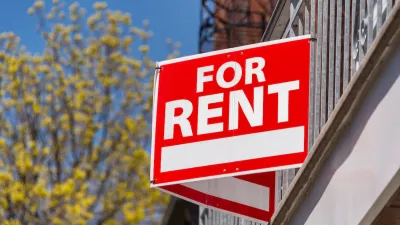New data points to the continued worsening of rental housing affordability. Due to a lack of federal response, some state and municipal governments are taking matters into their own hands in an attempt to add to their supply of affordable housing.
The 2016 State of the Nation’s Housing Report published by Harvard’s Joint Center for Housing Studies once again points to the continued worsening of rental housing affordability as a significant societal issue calling for a more concerted response. Citing recent data from the American Community Survey, the report found that the number of renters facing housing cost burdens (i.e. paying more than 30 percent of their income for housing costs) hit another record high of 21.3 million, which is just about half of all renter households in the nation. More concerning, the number of people facing severe cost burdens (devoting more than half their income to housing), also reached a new record of 11.4 million. The report documents how the affordability crisis is getting new and greater policy attention, particularly at the state and local level. Indeed, with federal response failing to keep up with the need, a growing number of state and municipal governments have been taking matters into their own hands in attempts to add to the supply of affordable housing.
Affordability problems are nearly universal for the lowest income households. For those making $15,000 per year—roughly the equivalent of full time work at the federal minimum wage—83 percent are housing cost burdened. For most of these households, the level of burden is severe, with 72 percent of the lowest-income renters and 66 percent of the lowest-income owners paying over half their monthly household incomes towards housing.
But cost burdens are not limited to low-income households. They are increasingly climbing up the income scale to reach more and more moderate-income households.
FULL STORY: As Affordability Worsens, State and Local Governments Act on their Own

Alabama: Trump Terminates Settlements for Black Communities Harmed By Raw Sewage
Trump deemed the landmark civil rights agreement “illegal DEI and environmental justice policy.”

Planetizen Federal Action Tracker
A weekly monitor of how Trump’s orders and actions are impacting planners and planning in America.

Why Should We Subsidize Public Transportation?
Many public transit agencies face financial stress due to rising costs, declining fare revenue, and declining subsidies. Transit advocates must provide a strong business case for increasing public transit funding.

Understanding Road Diets
An explainer from Momentum highlights the advantages of reducing vehicle lanes in favor of more bike, transit, and pedestrian infrastructure.

New California Law Regulates Warehouse Pollution
A new law tightens building and emissions regulations for large distribution warehouses to mitigate air pollution and traffic in surrounding communities.

Phoenix Announces Opening Date for Light Rail Extension
The South Central extension will connect South Phoenix to downtown and other major hubs starting on June 7.
Urban Design for Planners 1: Software Tools
This six-course series explores essential urban design concepts using open source software and equips planners with the tools they need to participate fully in the urban design process.
Planning for Universal Design
Learn the tools for implementing Universal Design in planning regulations.
Caltrans
Smith Gee Studio
Institute for Housing and Urban Development Studies (IHS)
City of Grandview
Harvard GSD Executive Education
Toledo-Lucas County Plan Commissions
Salt Lake City
NYU Wagner Graduate School of Public Service





























